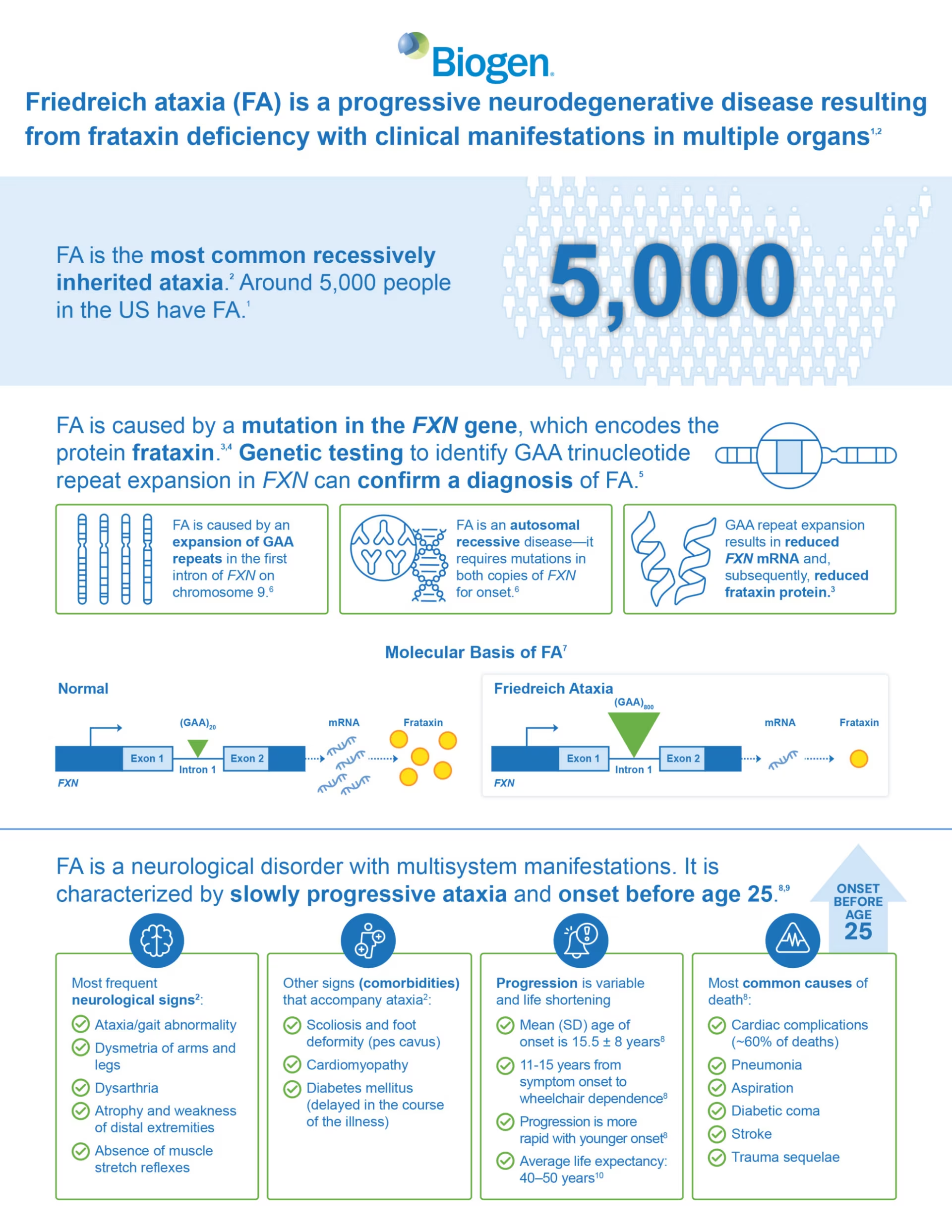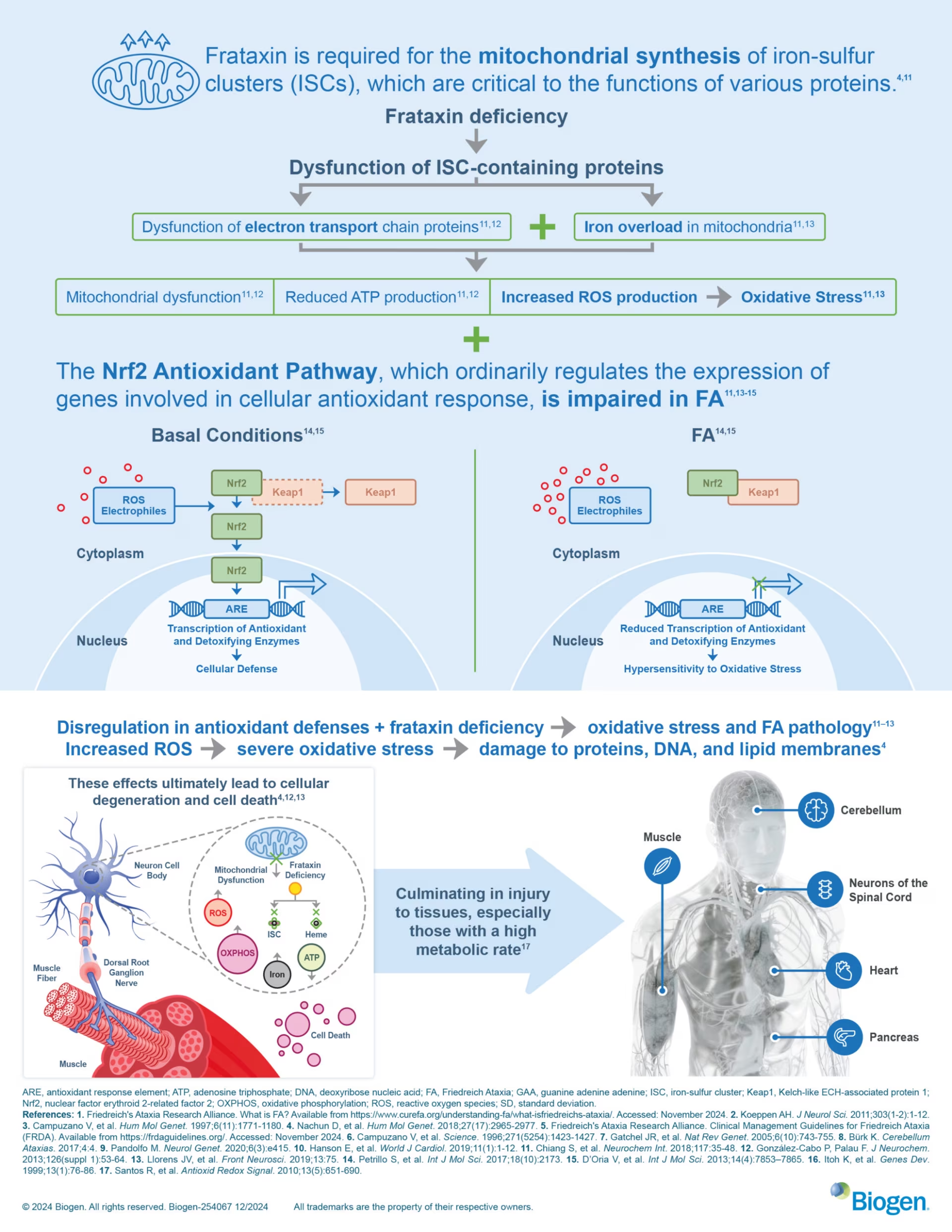touchFEATURE
Friedreich ataxia – from genetic mutations to clinical symptoms
Learning Objectives
After watching this activity, participants should be better able to:
- Describe the typical manifestations, and age of onset and death of patients with Friedreich ataxia (FA)
- Outline the pathology of frataxin gene mutations
- Understand how diminished frataxin production translates into the symptoms of FA
Overview
FA is a progressive neurodegenerative disorder with multi-organ manifestations including of the nervous system, heart, skeletal muscles and pancreas. Underlying these symptoms is a diminished production of the mitochondrial protein, frataxin, leading to increased oxidative stress, particularly in cells with high metabolic activity. In this activity, learn how frataxin gene mutations translate into FA clinical signs and symptoms and what pre-clinical evidence suggests may counteract the disease.

A downloadable pdf version of the Mechanism of Disease Infographic can be found in the Toolkit here.
A downloadable pdf version of the Mechanism of Disease Infographic can be found in the Toolkit here.

Log into your Touch Account
Earn and track your CME credits on the go, save articles for later, and follow the latest congress coverage.
Sign up with an Email
Or use a .
This Functionality is for
Members Only
Explore the latest in medical education and stay current in your field. Create a free account to track your learning.







